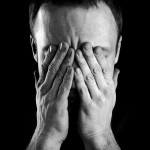
Burnout has been described as ‘a syndrome of emotional exhaustion (EE) and cynicism that occurs frequently among individuals who do “people-work” of some kind.’ Three dimensions to burnout have also been described, increased EE (feeling of fatigue by the stress of work), increased depersonalisation (DP; development of negative and cynical attitudes) or reduced levels of personal accomplishment (PA; decline in one’s feelings of competence and self achievement). The aim of this review was to explore the factors contributing to burnout in dentists and to extend the review to include undergraduate dental students.
Methods
Searches were conducted in the Medline, Embase and HMIC databases. Papers focused on burnout in dentists and/or dental students and the factors contributing to it were considered. Papers were critically appraised and a thematic analysis conducted.
Results
- 33 studies were included.
- The most prevalent and significant factors associated with burnout were:-
- younger age,
- male gender,
- student status,
- high job-strain/working hours,
- those enrolled in clinical degree programmes and
- certain personality types.
- However, only a limited amount of literature explored the directional relationship between these factors and burnout.
Conclusions
The authors concluded:
This review identified several significant factors contributing to burnout in dentists and dental students. Further longitudinal and prospective studies are required to assess causation. Burnout should be considered a multifactorial phenomenon that can develop early in a dental career. Screening programmes and coping strategies might help to identify and prevent it.
Comments
This review updates an earlier review of this topic conducted by Lee et al. That review was restricted to studies using the Maslach Burnout Inventory (MBI) questionnaire. It is not clear if this updated review also used this criterion. The Lee review searched more databases than this new review although both reviews has used English language and those sources available through local University libraries. As a result both reviews are likely to have excluded some potentially relevant literature. The Lee review included just 7 papers while this new review includes 33, although this could be related to broader inclusion criteria. The review lacks some detail on how the thematic analysis was conducted and some more details about the included studies would have been helpful. For example, how many focused on dental students compared with dentists and which countries were represented in the sample? With the prevalence of burnout reported as being greater than 26% this is an important issue that needs to be investigated further and this review helps to identify some of the potential factors that need to be looked into.
Links
Singh P, Aulak DS, Mangat SS, Aulak MS. Systematic review: factors contributing to burnout in dentistry. Occup Med (Lond). 2015 Oct 5. pii: kqv119. [Epub ahead of print] PubMed PMID: 26443193.

Burnout in Dentistry https://t.co/igyPeC7qfC
Burnout in dentistry https://t.co/FfzJgQbw6L @sharethisさんから
Burnout in dentistry https://t.co/SmtndHzQhb via @sharethis
Review identifies several factors contributing to burnout in dentists https://t.co/igyPeC7qfC
What contributes to burnout in dentists? https://t.co/igyPeC7qfC
Factors contributing to burnout in dentists identified in review https://t.co/igyPeC7qfC
Don’t miss – Burnout in Dentistry https://t.co/igyPeC7qfC